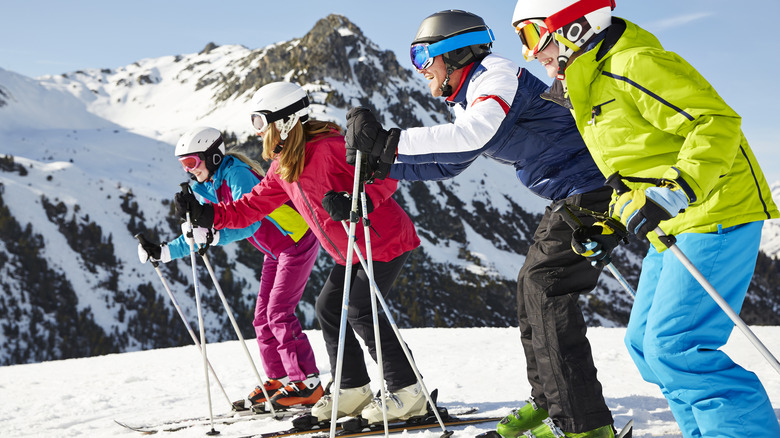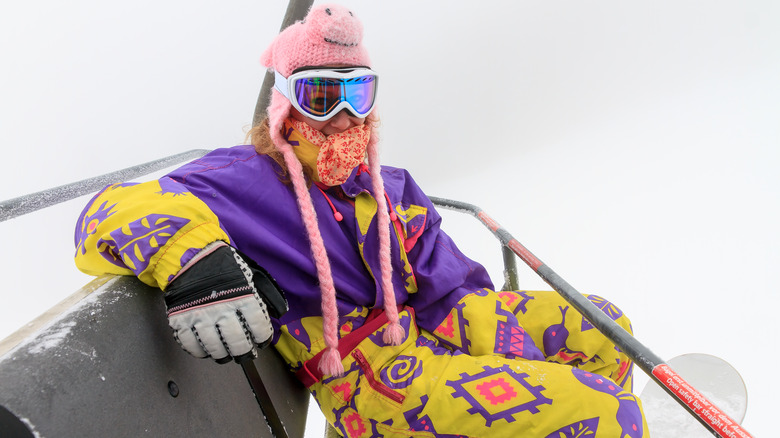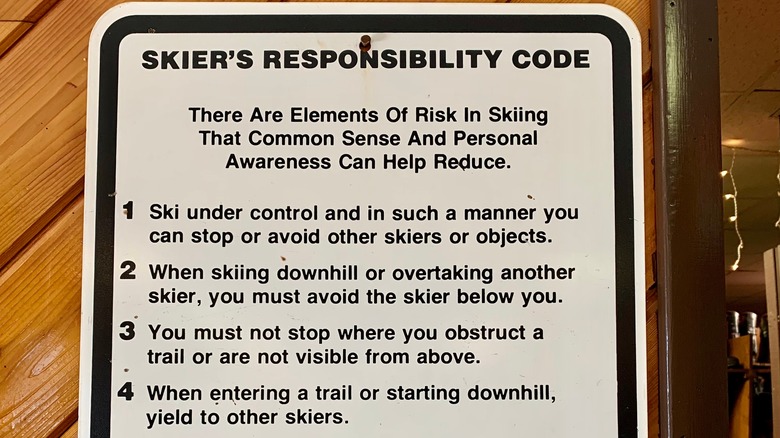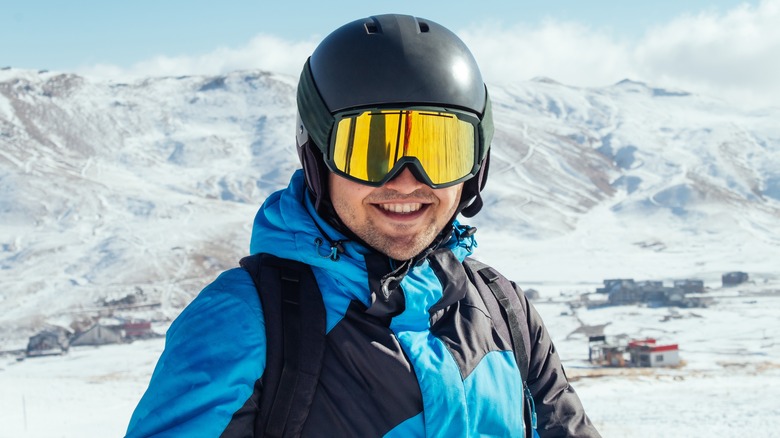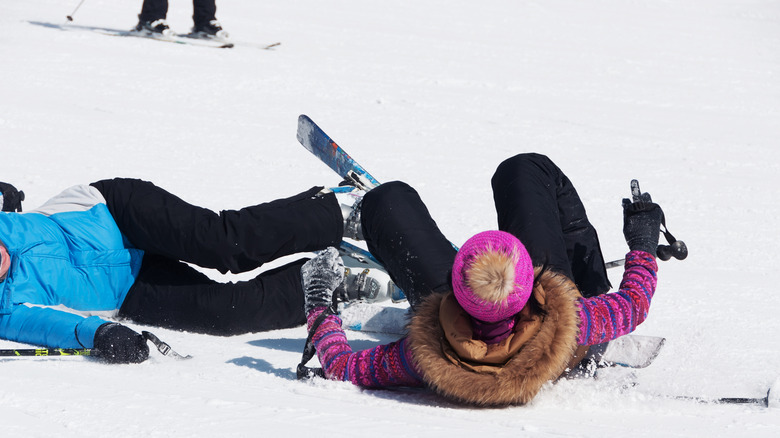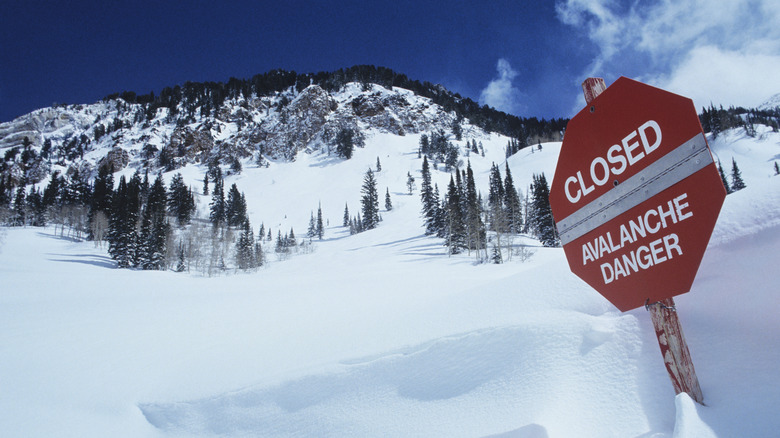Safety Tips To Know Before Your First Skiing Adventure
Skiing is a popular outdoor activity, but it is also one of the most expensive outdoor sports. However, just laying out the cash to buy the basic gear to start skiing does not guarantee successful entry into the sport. Why? Well, as exhilarating as skiing down a snow-covered slope can be, it also entails some inherent risks. In fact, well over half a million people are injured on ski slopes each year. So, it is not only necessary to buy the right gear and develop a bit of skill, but there are also some safety precautions you need to become familiar with.
Given the risks involved, safety should be first and foremost on your mind as you enter the world of snow skiing. The best practice is to learn how to stay safe on the slopes before your first ski trip and maintain using those safety precautions even as you become a more advanced skier. With that in mind, here are some safety tips you need to know before your first skiing adventure.
Dress for the winter weather
Skiing obviously takes place in colder weather, so it is necessary to protect yourself from the chill. However, it is equally important to protect yourself from moisture, both from perspiration and the melting snow that contacts your clothing or body. Failure to dress appropriately on the ski slopes can have dire consequences. For one, exposure to these winter elements could lead to hypothermia setting in or even a case of frostbite. Becoming hypothermic or frostbitten causes concern not only the damage that can result from those conditions, but makes it much harder to maintain control and focus on the slopes and could lead to more accidents.
To avoid such dangers, R.E.I. suggest dressing in layers, just as you would in any cold weather situation. The underlayer should be of a moisture wicking layer, followed by an insulating mid-layer. This should be topped with a waterproof jacket and ski pants or bibs, such as the Arctix Essential Insulated Bib Overalls. You should also protect the portions of your skin not covered by these layers with gloves, neck gaiter, goggles, and a helmet.
Be a responsible skier and follow the rules
This advice sounds almost elementary school-ish, but it is one of the surest ways to stay safe on the slopes. As most of us have heard from someone, somewhere, about something, rules are there for a reason. In the case of snow skiing, not following them could have dangerous consequences.
The vast majority of ski areas will have rules and advisories posted, so be sure and read any signage you come across. While some of these signs may just be reminders of etiquette and general rules, others may be warning of specific risks in different portions of the course. The International Ski Federation issues a set of guiding rules and responsibilities that apply on any ski run. It is a good idea to familiarize yourself with these rules before you embark on your first ski adventure and to remind yourself before each subsequent ski trip.
Some of the more basic rules that should always be followed include avoiding other skiers. This is particularly important when overtaking someone. You should also never stop in a place on a run where you may become an obstacle for other skiers or be difficult for them to see. You should also always assist anyone you come across who needs help.
Wear a helmet any time you're skiing
Collisions are one of the more common accidents in skiing. This includes not just collisions between skiers, but also collisions with trees, logs, and other objects. In fact, collisions with trees are the number one cause of fatalities on ski slopes. Do keep in mind, helmets alone cannot prevent injuries, as they are not designed to protect against impacts speeds skiers are capable of attaining. However, they are a good first line of defense against head injuries on the slopes.
When choosing a helmet, first and foremost make sure it is ASTM F2040 Certified. Secondly, make sure it fits. It should not wobble on your head and fit right up against your goggles with no gap in between. It is important to wear the helmet pushed forward enough to protect your forehead against any front impact. The cost of ski helmets varies dramatically, but mid-price models such as the OutdoorMaster MIPS Ski Helmet, which is both ASTM F2040 and CE EN 1077 certified, is a good entry point.
Watch out for other skiers
Another safety tip that seems to be just common sense is to watch out for other skiers and, particularly, watch out for and avoid collisions between skiers. While this sounds simple enough, it is very easy to get distracted by the scenery and surroundings and end up entangled in an otherwise avoidable collision. So, any time you are on the slopes, it is very important to be aware of your surroundings and constantly scan the run downhill looking for obstacles or fallen skiers.
If you happen across skiers who have collided, safely come to a stop and render aid, if necessary. But, do keep in mind that you do not want to put yourself or others at risk when stopping to assist. Again, be aware of your surroundings. Alert other skiers to the situation by placing crossed skis above the collision area and, if possible, have someone go up to a very visible position to signal other skiers as to the potential danger.
Know what to do in an avalanche
An avalanche is perhaps the greatest threat facing not just skiers, but anyone exploring snow-covered mountains. In fact, it is one of the most common ways people die in the wilderness. Knowing how to recognize the signs of danger and what to do if you're caught in an avalanche can mean the difference between life and death. An avalanche can occur on snow-covered slopes, but are most common on slopes greater than 30 degrees and those that face the prevailing winds, as this is where the majority of the snow builds up over time. Avalanches pose the greatest risk for backcountry skiers, but anyone who snow skis needs to be aware of the risk.
To avoid being an avalanche victim, the first — and simplest — step to take is avoid skiing in any areas that are posted as an avalanche risk and always check weather conditions before heading on a ski adventure. There will often be warning signs before an avalanche, such as cracks in the snow, loud rumbling, or shaking of the ground.
If you do witness any of these signs, the first action you should take is to determine where the avalanche flow may go and get a safe distance away. If the flow is already descending upon you, move as far as possible away from the center of the avalanche and hold onto a tree if you can. If you become caught in the avalanche flow, use a swimming motion to go with the flow. Try to keep one arm extended above your head. This will create an air pocket and point towards the surface if you become buried in the avalanche.
